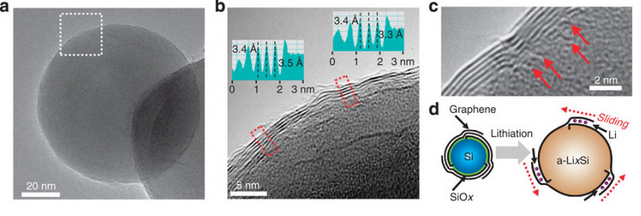The researchers at Samsung have come up with a new technology to produce a silicone cathode material that will coat Graphene onto a silicon surface to render higher energy density. In simpler words, Samsung has found a technique to nearly double the capacity of the lithium batteries that are used to energize the smartphones and other devices.
The battery capacity of Samsung smartphones has increased to some extent in the recent years. However, the technology is limited by the physical dimensions of the devices and the materials used in the battery.
The batteries cannot be made bigger, but there is a necessity for increased capacity. For this reason, the researchers have been trying to figure out new materials that can be used to find a solution to the same. This is how the new coating method for battery cathodes was found.
This new method overcomes the cycling performance and the capacity limitations that are imposed by the implementations that are available at present. This new process employs excellent conductive material called Graphene that is directly grown onto the silicon surface coating without the formation of silicon carbide.
The researchers at Samsung claim that this technique lets the cell to reach a volumetric energy density of 972 and 700 Wh l−1 initially and at the 200th cycle respectively. This happens when it is paired with a commercial lithium cobalt oxide cathode. This is 1.8 and 1.5 times higher than that of the commercialized lithium ion batteries resulting in an increased battery capacity.
This design will usually reduce the lifespan of the battery due to increased charge and discharge cycles. But, the researchers say that it will render good cycling performance as it has multi-layer design.
Samsung expects that this breakthrough will have significant implications on both mobile devices and electric cars. However, this technology will take a couple of years or three to get into commercialization as the others.













Discussion